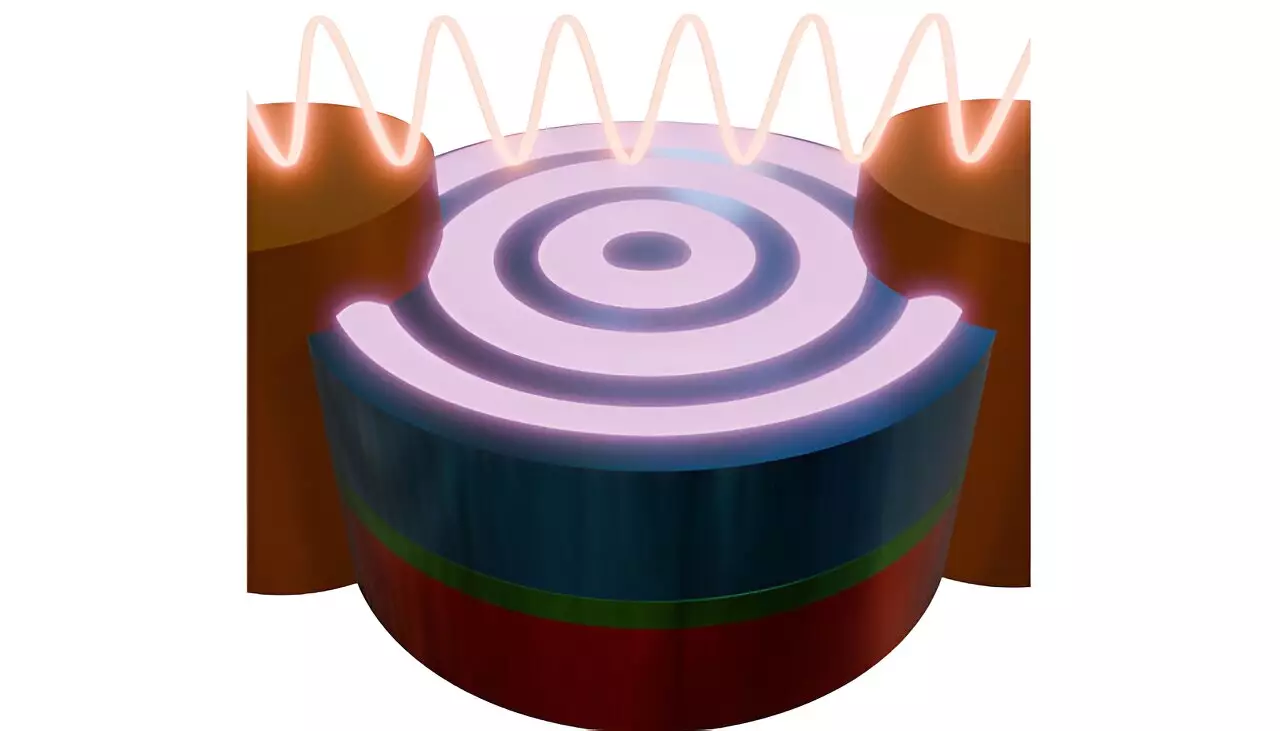The relentless demand for more powerful and compact computing devices poses significant challenges to the current technological framework underpinning most electronics. Traditionally, devices are built upon complementary metal oxide semiconductor (CMOS) technology, which, while effective, faces pressing limitations due to miniaturization constraints and high energy consumption. Emerging alternatives are needed to maintain the trajectory of technological advancement, and a recent breakthrough in magnonics may hold the key to unlocking new potential in energy-efficient computing.
At the forefront of this innovation is a groundbreaking study published in *Science Advances*, which brings together researchers from the University of Vienna, the Max Planck Institute for Intelligent Systems in Stuttgart, and several Helmholtz Centers in Germany. Their findings underscore the potential of magnons—quantum excitations of spin waves—as carriers of information and energy in future computing architectures. By leveraging the principles of magnonics, researchers aim to overcome the inherent hurdles posed by traditional transistor systems.
Sabri Koraltan, a leading contributor to this research, likens the behavior of spin waves to ripples created when a stone is introduced to still water. In a magnetic medium, these waves can be manipulated to convey information with remarkably low energy losses. This paradigm shift challenges the existing reliance on billions of transistors and suggests a move towards more sustainable and efficient systems.
One of the principal hurdles in developing efficient magnonic devices has been the generation of spin waves with short wavelengths. Existing techniques, particularly those that utilize nano antennas, invite challenges related to limited efficiency and demanding fabrication environments. Nano antennas are typically created in sophisticated clean-room settings designed for advanced lithography—a process both costly and time-consuming.
In contrast, the collaborative team introduced a simpler method. By directing electric currents through magnetic stacks characterized by swirling patterns, they achieved remarkable efficiency in generating spin waves. Their approach utilized a lateral alternating current geometry within synthetic ferrimagnetic vortex pairs. This configuration allows for significant improvements over conventional methods, offering an efficiency increase by orders of magnitude.
The researchers leveraged high-resolution X-ray microscopy to visualize these newly produced spin waves at nanoscale wavelengths. This advanced imaging technique, employed at the BESSY II electron synchrotron facility in Berlin, provided clear evidence of the dynamics and properties of the generated spin waves operating at gigahertz frequencies.
Additionally, an innovative aspect of their research involved using specialized materials that shifted their magnetization in response to applied strain. Such responsiveness means the direction of generated spin waves can be dynamically altered just through changes in electric current magnitude, paving the way to develop active magnonic devices that are versatile and adaptive.
The implications of these findings extend far beyond the individual components of computing devices. They open a pathway to the creation of adaptable magnonic circuits that promise not only better energy efficiency but also a streamlined production process. Instead of complex, high-fidelity nanofabrication, this new approach could simplify and democratize the manufacturing of advanced computing solutions.
Dieter Süß, head of the Physics of Functional Materials Department at the University of Vienna, highlighted the importance of large-scale simulations in deciphering the mechanisms at play in spin-wave excitation. With the development of advanced simulation software like magnum.np, deeper insights into the operational dynamics of this novel technology can help accelerate its integration into practical applications.
The research undertaken by this international team signifies a pivotal moment in the drive toward energy-efficient computing technologies. As the limits of CMOS technology draw nearer, the potential of magnonics to create a new breed of reprogrammable circuits is increasingly attractive. Should these advancements be realized to their full potential, they could not only meet future demands for computing power but also redefine our relationship with energy consumption in technology, steering it towards a more sustainable future. The journey into this exciting frontier is only just beginning, and the promise of magnonics stands at the helm of this transformative wave of innovation.


Leave a Reply